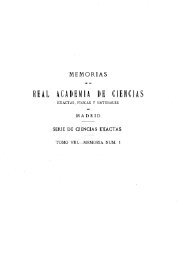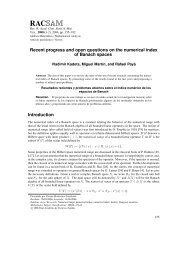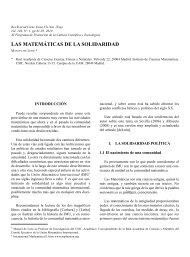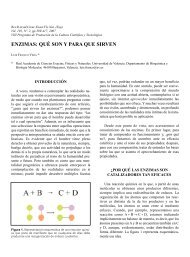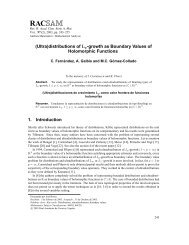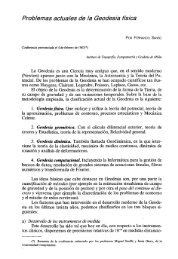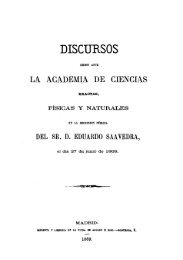The water footprint and virtual water exports of Spanish tomatoes
The water footprint and virtual water exports of Spanish tomatoes
The water footprint and virtual water exports of Spanish tomatoes
- No tags were found...
Create successful ePaper yourself
Turn your PDF publications into a flip-book with our unique Google optimized e-Paper software.
38 THE WATER FOOTPRINT OF TOMATO PRODUCTIONferent crop <strong>water</strong> uses. This factor was not taken into account,so the analysis <strong>of</strong> the temporal evolution <strong>of</strong> theprovinces could be improved. In any case, the scope <strong>of</strong> thisstudy is different as we intended to cover the whole country<strong>and</strong> for a relatively long period.<strong>The</strong> apparent <strong>water</strong> productivity (€/m 3 ) varied significantlynot only between production systems, but also betweenperiods <strong>of</strong> the year. <strong>The</strong> productivities were significantlyhigher for greenhouse production <strong>and</strong> for early <strong>and</strong>late season productions. <strong>The</strong>se results are related since productionin early (January to May) <strong>and</strong> late (October to December)seasons are done mainly in greenhouses, whichcompensates the adverse climatic conditions <strong>of</strong> these periods.Along with this, these productions are to a high degreeintended for export markets <strong>and</strong> consumed in other countries(García, 2009) <strong>and</strong> therefore focus on a high-qualityvaluable product (Castilla, 2007). This way, <strong>Spanish</strong> <strong>water</strong>resources are <strong>virtual</strong>ly exported away from the country inexchange for revenues.<strong>The</strong> differences in the apparent <strong>water</strong> productivity wouldprobably have been sharpened if we had distinguished theprices <strong>of</strong> the <strong>tomatoes</strong> for provinces <strong>and</strong> growing systems,specially separating production for fresh consumption fromproduction for the industry as the price <strong>of</strong> both products isvery different. Still, this is reflected to a certain degree inour work. In general terms, the production areas (<strong>and</strong> theprovinces) “specialise” themselves in specific productions foragronomical <strong>and</strong> socio-economical reasons.<strong>The</strong> analysis <strong>of</strong> the apparent <strong>water</strong> productivity in relationto the origin <strong>of</strong> <strong>water</strong> did show clearly that ground<strong>water</strong>is more productive than surface one. This is alsoreflected in the type <strong>of</strong> production in which each <strong>of</strong> themis used. Surface <strong>water</strong> is predominantly used in areas



